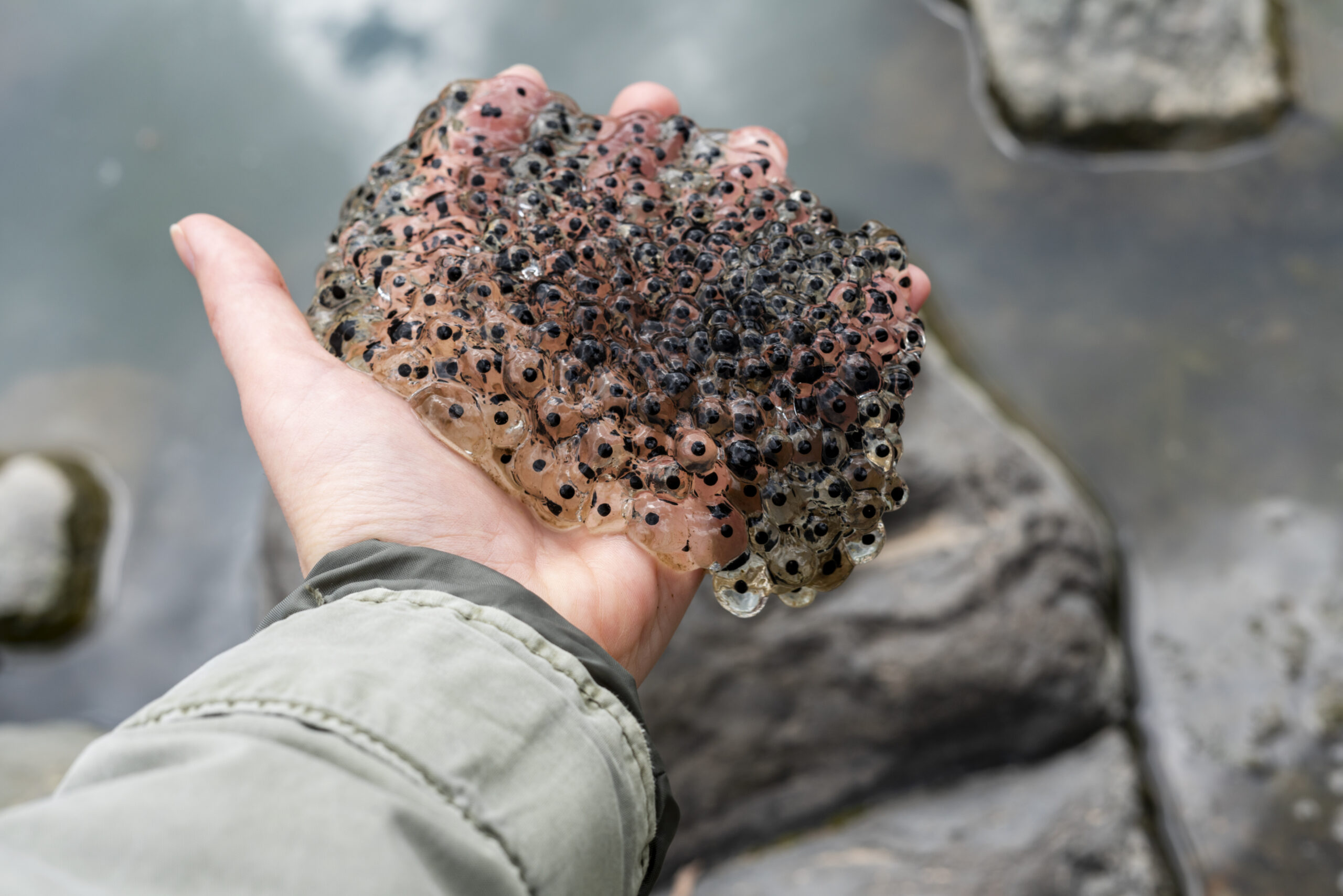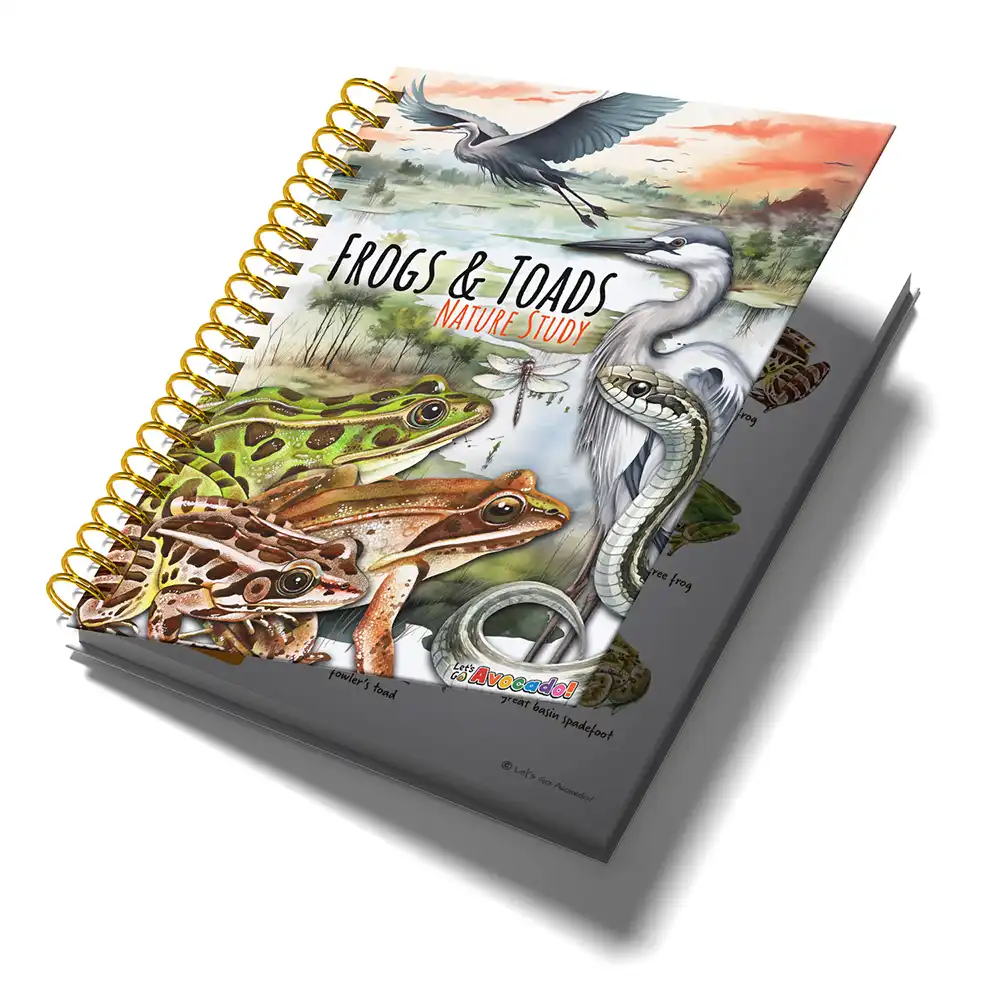This page may contain affiliate links.
Read our disclosure and privacy policy here.
Frogs and toads lay their eggs in water, usually in ponds, lakes, or slow-moving streams. Have you ever spotted any on your nature walks? The eggs are laid in clusters or strings of jelly-covered masses, which are often attached to plants or other objects in the water. If you did spot some, did you know whether they were frog eggs or toad eggs? Here are a few things that are good to know about frog and toad eggs. These facts will help you to better understand them when you come across them in nature.
Table of Contents
4 Slimy But Fascinating Facts About Frog And Toad Eggs
What's the difference between frog and toad eggs?
The main difference between frog eggs and toad eggs is their appearance and arrangement. Frog eggs are usually laid in large clusters or masses and are covered in a jelly-like substance, while toad eggs are usually laid in long chains or strands. Frog eggs are usually smaller compared to toad eggs, and frogs usually lay a lot more eggs than toads. However, it’s important to keep in mind that these differences can vary among all the different frog and toad species.
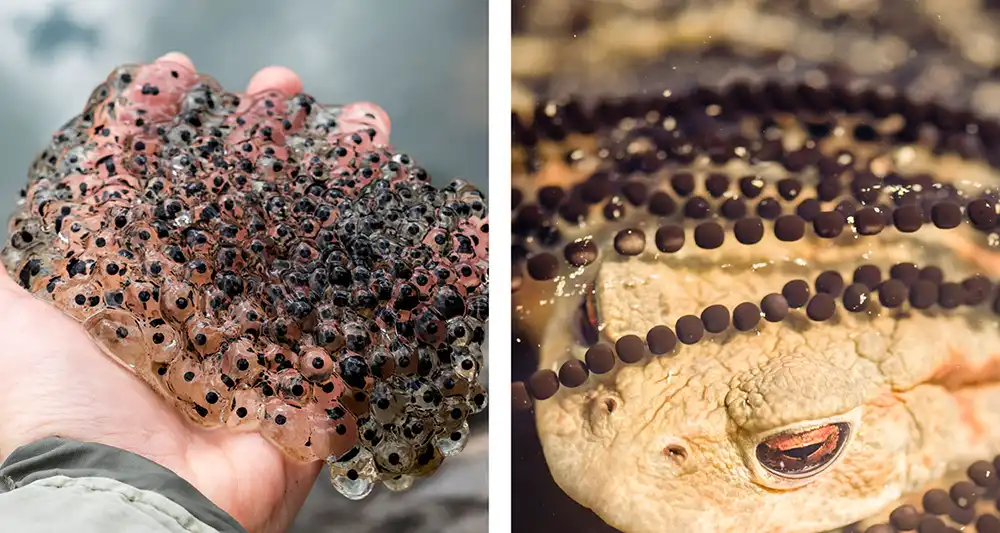
How long does it take for frog and toad eggs to hatch?
The time it takes for frog eggs to hatch depends on the species and environmental conditions. On average, it takes about one to three weeks for most frog eggs to hatch. However, some species may take longer, ranging from a few days to several weeks. Factors such as water temperature, availability of food, and other environmental conditions can influence the hatching time.
What are the defense mechanisms of frog and toad eggs?
Frog and toad eggs have different strategies to protect themselves from predators. The jelly coating around the mass of frog eggs helps to keep the eggs moist and provides some protection against predators. Some frog species may attach their eggs to plants or debris in the water, keeping them elevated and out of reach from potential predators.
Toad eggs are slightly different from frog eggs when it comes to the jelly coating. While some species of toads do produce jelly-like substances around their eggs, it is generally less compared to frog eggs. Toad eggs tend to have a more sticky and gelatinous coating rather than a thick jelly-like substance. This coating helps to keep the eggs together and protect them from drying out.
The consistency and appearance of the coating can vary among different species of toads. So, while not all toad eggs have a visible jelly layer like frog eggs, they still have some form of protective coating to ensure the eggs’ safety and development. This provides some defense against predators. The coating also contains toxins in some toad species, which can make the eggs taste bad, or be toxic to potential predators.
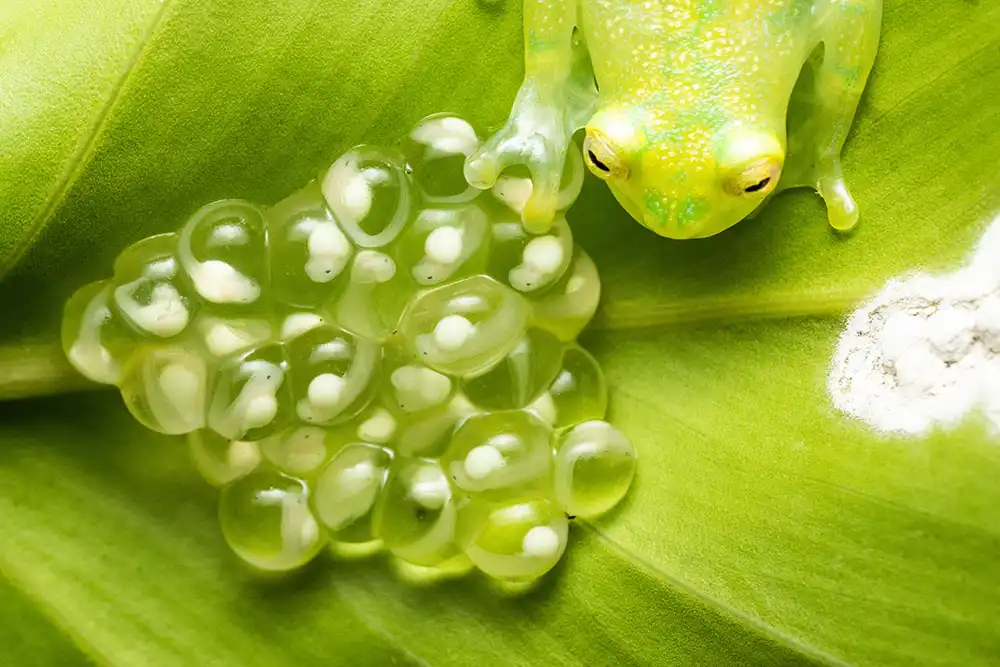
Frog eggs can easily be camouflaged wherever they are laid since most of the egg and jelly is transparent. This makes them a lot harder to see, wherever they are.
Both frog and toad eggs rely on camouflage as well. The color and texture of the eggs blend with the surrounding environment, making them harder for predators to spot. This helps to reduce the chances of the eggs being detected and eaten.
While these protective mechanisms help increase the chances of survival for the eggs, they are still vulnerable to some predators, like insects, fish, and other aquatic animals. Only a small number of the eggs laid by frogs and toads will successfully hatch and develop into tadpoles, as the survival rate is relatively low due to predation and other environmental factors.
Where can I find frog and toad eggs?
If you’re curious about finding frog or toad eggs, there are a few places you can look! Frog and toad eggs are usually found in or near bodies of water like ponds, lakes, or even small puddles. These amphibians lay their eggs in water because it provides a safe and moist environment for the eggs to develop. You can explore local wetlands, marshes, or even your own backyard if you have a pond or a small water source nearby.
Look carefully for clusters of gelatinous eggs attached to plants or floating on the water’s surface. Remember to be respectful of nature and observe from a safe distance first. See if you can identify the types of frogs or toads in the area, and use our Frog ID section to see if they are endangered. Studying frogs and toads can be a be an exciting activity, but if you come across an endangered or ‘at risk’ species, it’s best to leave them alone.
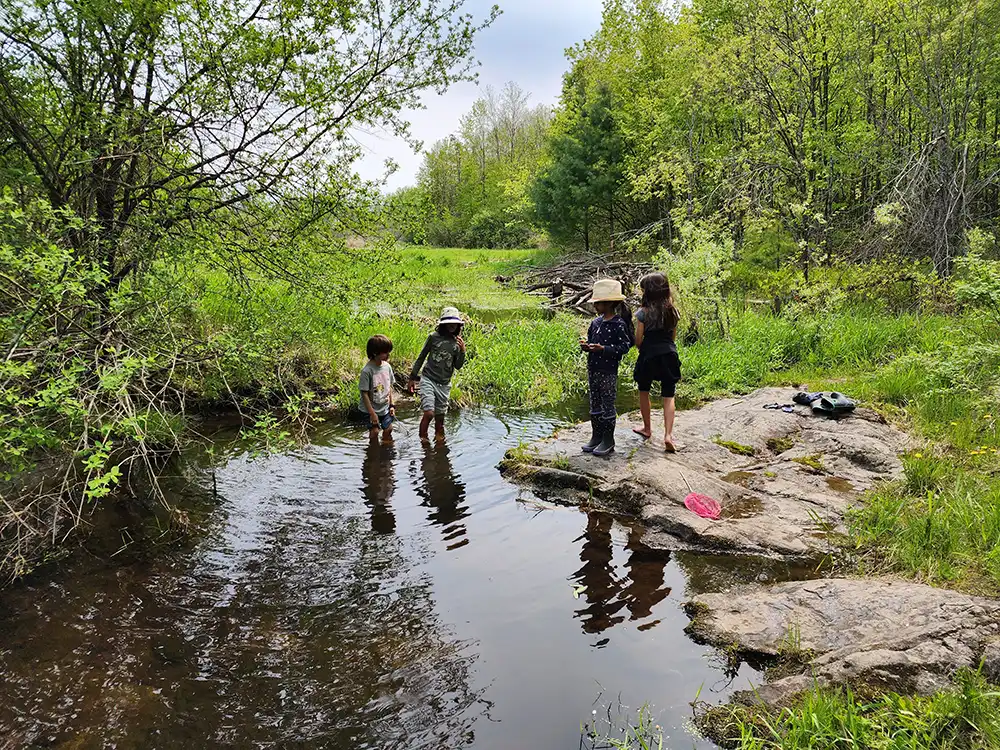
Checking out a neighborhood pond for frogs and frog eggs.
How can we learn more about frog and toad eggs?
If you have access to wetlands or ponds in your area, visit them and observe the environment. Look for signs of frog and toad activity, such as egg masses or tadpoles. Take pictures or sketch what you see and try to identify the types of eggs you find. This hands-on experience will deepen your understanding of their habitats and life cycles.
Check if there are any nature clubs or organizations in your communityA community is all the living organisms in an ecosystem. This includes animals, plants, fungi, and bacteria. It does not include dirt, rocks, water, and other non living things. Learn More that focus on amphibians. They may organize field trips or educational events where you can learn about frogs and toads, including their eggs. You can also connect with like-minded individuals who share your interest in these fascinating creatures.
Start a nature journal where you can document your observations and discoveries about frog and toad eggs. Write down your questions, draw sketches, or take notes about what you learn. This will help you organize your thoughts and serve as a valuable reference for future learning.
Remember, the more you explore and learn, the more you’ll discover. Enjoy the process and have fun as you deepen your understanding of these fascinating creatures!
Fun Facts About Frog and Toad Eggs
- Frog and toad eggs can tell us who laid them just by their color and how they’re grouped! Frog eggs are usually in big clumps that look like jelly, while toad eggs are laid in long, stringy lines.
- Both frog and toad eggs are laid in water, but not just any water. They prefer calm, still waters like ponds or slow-moving streams. This is because the eggs need a safe, peaceful place to grow without being washed away or eaten by predators.
- Those eggs aren’t just sitting there unprotected; they have a super cool jelly-like substance around them. This jelly coat keeps them safe from getting dried out and makes it hard for predators to eat them. It’s like a squishy shield!
- The temperature of the water where the eggs are can change how fast the tadpoles inside develop. Warmer water can make the tadpoles hatch faster, while cooler water slows things down.
FAQ: Your Questions About Frog and Toad Eggs Answered!
1. What color are frog and toad eggs?
Frog eggs are often clear or slightly milky and clumped together like jelly, while toad eggs are usually in a long chain wrapped around plants and are darker, almost black.
2. Where do frogs and toads lay their eggs?
They lay their eggs in water. Frogs prefer still waters like ponds or marshes, and toads look for shallow, calm waters where their eggs can stay safe from fast currents.
3. Why are frog eggs in clumps?
Frog eggs stick together in clumps to stay protected. The big mass of jelly-like substance around them helps keep them moist and safe from predators.
4. How long does it take for frog and toad eggs to hatch?
It depends on the species and the temperature of the water, but generally, it takes about 1 to 3 weeks for the eggs to hatch into tadpoles.
5. Do all frog and toad eggs survive?
No, many eggs get eaten by predators like birds, fish, and insects, or they might not hatch if conditions aren’t right, like if the water temperature is too cold or too hot.
6. Can you tell how many tadpoles will come out of each egg?
Usually, one tadpole comes out of each egg. But, in each clutch or string of eggs, there can be hundreds of eggs laid at the same time!
7. What do frog and toad eggs eat?
Frog and toad eggs don’t eat; they get their nutrients from the yolk inside the egg, just like chicken eggs do. Once they hatch into tadpoles, they start to eat plants and algae.
8. How do tadpoles breathe inside the eggs?
They absorb oxygen through the jelly and the egg’s membrane, which lets them breathe even before they hatch and develop gills for breathing underwater.
9. Why do some eggs have a jelly-like substance around them?
The jelly provides protection, keeping the eggs moist and safe from many predators. It’s like a protective bubble that helps ensure they reach the tadpole stage.
10. Can frog and toad eggs freeze?
Frog and toad eggs are very sensitive to temperature. If the water they’re in freezes, the eggs usually don’t survive. However, some species lay their eggs in places where the water is less likely to freeze solid.

There’s a lot to explore right where we are, in our own neighborhoods and backyards! Join us while we get off the couch and explore the everyday wonders of nature, science, space, engineering, art, and anything else we stumble upon during on our adventures.


